Want Us To Contact You?
Services
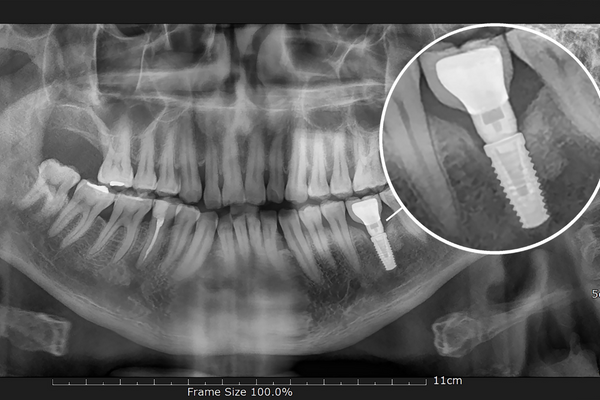
3D Imaging Conebeam CT Scan
Conebeam CT scans are a highly advanced means of dental imaging used to map out the positions of the teeth, underlying tooth roots, jawbone, and other oral features. Although most dental practices use digital x-rays and oral scans, we use CBCT scans to provide several benefits that conventional methods do not.
What Is Conebeam CT?
Conebeam CT produces a conical beam of light while scanning the oral features. When the conical beam of light is projected toward the patient’s face, who is comfortably seated in the dental chair, the images rendered from the scans are projected on a chairside computer screen. The device would revolve around the patient, providing three-dimensional views of the oral features. The dentist will then use this data to diagnose the oral conditions thoroughly and fabricate dental restorations if required.
How Are CBCT Scans More Advantageous?
- The precise images produced through CBCT scans are more detailed than those of regular oral scans. This allows the dentist to get a clearer view of the teeth, gums, and other tissues in the mouth.
- Mapping the positions of the teeth and the tooth roots for dental implantation is easier using CBCT scans.
- Whenever the dentist has to carry out oral surgery, we will need to be aware of the positioning of the nerves and blood vessels. This is relatively easy with CBCT scans, and the results obtained are precise.
- Checking the teeth for cracks, chipping, underlying dormant cavities, etc., can be done effectively using CBCT scans.
- With a single scan, the dentist can get an unlimited number of views of the mouth in 3D.
- The device is quite safe as it doesn’t produce a large amount of radiation, which makes it safer than conventional x-rays.
- Scanning using CBCT is quick, easy, and extremely convenient for the patient, as the device would revolve around the patient’s head.
Nightguards
We sometimes get patients at our dental practice who complain of frequent morning headaches and experiencing throbbing pain in the jaws when they wake up. Sometimes, they also tend to find small traces of granular particles in their mouth, which could be the eroded enamel resulting from teeth grinding. These are some commonly experienced symptoms of night-time subconscious teeth grinding – a condition often called bruxism.
What Are Nightguards?
Nightguards are oral protective appliances made from dental-grade plastic. You can put them on just before going to sleep so that they can prevent your teeth from going through excessive wear. They are customized to fit perfectly on the teeth, thanks to highly precise digital impressions. It allows you to feel absolutely comfortable when you wear them without causing irritation against the teeth or gums.
Is a Nightguard Necessary?
Nightguards preserve and protect the natural enamel by avoiding the grinding of the teeth. Once lost, the natural tissues of the teeth (enamel) wouldn’t grow back over time, even if you undergo treatment and take medication. Hence, getting a customized night-time mouthguards would prevent this. It wouldn’t cost you much and will help you save a lot more money than getting worn-out teeth restored.
How Comfortable Is It to Wear?
Several types of night guards are available in local pharmacies, which are essentially one-size-fits-all or boil-and-bite. They can lead to a lot of discomfort and pain in the teeth when you start using them due to their improper fit. Hence, we suggest you get custom-fabricated night guards from us that will fit your teeth perfectly and be quite comfortable to use. We take highly precise digital impressions of your teeth and use them to fabricate the guard from a dental-grade plastic material. During the initial days, it may feel a little weird to wear. But once you get used to it, you would hardly feel its presence.
Caring for the Nightguard
Taking optimum care of the night guard can extend its life significantly. Every day, clean it with a soft-bristle toothbrush after you take it off in the morning to remove the saliva, food debris, and microbes. While using it, make sure you do not chew on it as this could affect its shape and make it ill-fitting.
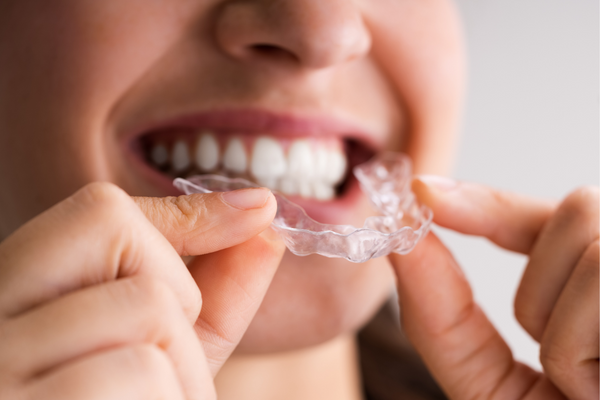

Glo Whitening
Glo whitening is a popular technique for removing stains on the teeth as it is very much effective for most individuals. It produces results that are several times more impressive than conventional in-office whitening.
Glo Whitening Procedure
Initially, a thorough screening is conducted to determine your candidacy for Glo whitening. A defensive spread is put over your lips and gums, leaving just your teeth uncovered. Next, the dentist applies the whitening gel on your teeth and spreads it evenly, where it will stay for 15 minutes. A special activating light is utilized along with the 25% hydrogen peroxide Glo whitening gel to expel stains from your teeth. The whole strategy takes around 45 minutes, as the procedure may be repeated to remove more resilient stains.
What Are the Advantages of Glo Whitening?
- Since the procedure involves the use of 25% Hydrogen Peroxide whitening gel, it produces better results compared to conventional teeth whitening.
- The use of an activating light helps to speed up the procedure. It can be completed in under an hour, making it one of the quickest teeth-whitening procedures.
- After completing the procedure, the teeth do not show a lot of sensitivity issues. This would usually be a problem with regular teeth whitening.
- The results of the whitening procedure last for a longer duration.
Crowns & Bridges
Dental crowns are widely used to restore teeth to their ideal contour, structure, and functionality. Bridges, on the other hand, are used to replace missing natural teeth. Both these restorations are made from dental-grade ceramic, allowing us to customize them according to the color, contour, and size required.
At Revive dental studio, we conduct a thorough screening procedure to determine your candidacy for dental restorations. This allows us to provide perfectly fitting restorations that are aesthetically pleasing and last for several years without any hassle.
Why Should You Choose Crowns and Bridges?
- Dental crowns can be used for several restorative and cosmetic purposes, such as restoring teeth that are severely worn out, cracked, broken, weak, etc. This makes them the most versatile dental restorations.
- Dental-grade ceramic can be customized as required to match the exact appearance of the teeth in terms of color, texture, contour, and functionality. Also, it offers excellent durability to ensure the restorations last for many years without hassle.
- A bridge is one of the simplest means to replace a missing tooth. It doesn’t require the need for surgery, such as in the case of dental implants. It makes the treatment procedure quick, convenient, and hassle-free.
- Getting a crown or bridge would require only two visits to the dentist’s practice. During the initial visit, highly-precise dental scans will be taken to act as a reference for the restoration. During the second visit, it will be bonded in place and checked for fit and comfort.
- The aesthetics of the smile will be restored to normal with these restorations. You will be able to smile with confidence as they wouldn’t be easily distinguishable even when someone takes a closer look.
What Is the Procedure Involved?
Both crowns and bridges are custom-fabricated to offer a perfect fit. Hence, we will conduct a thorough diagnosis and understand the severity of the condition before suggesting them. Highly-precise digital scans of the mouth are taken to act as a reference for fabricating them. It would take a few days to get them fabricated in a dental laboratory.
During the next consultation, temporary restorations will be removed, and the teeth will be cleaned and etched using a suitable etching solution. The restorations will be placed on the teeth’ prepared surface and checked for appropriate fit and comfort. Dental adhesives will be used to bond them permanently, after which a bite test will be taken.
Post-procedure Care
It is crucial you care for the restorations well after the procedure. Optimum oral hygiene, which involves regular brushing and flossing, is important to maintain their aesthetics. It is advisable to stay away from hard foods, such as nuts, candies, etc., and unhealthy oral habits. If you feel the restoration has loosened from the teeth, reach out to us immediately to get it fixed.
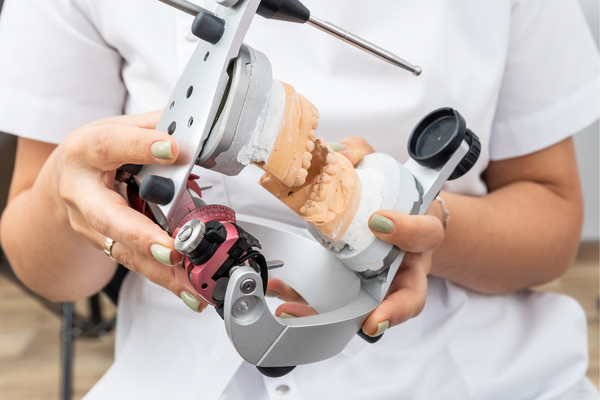
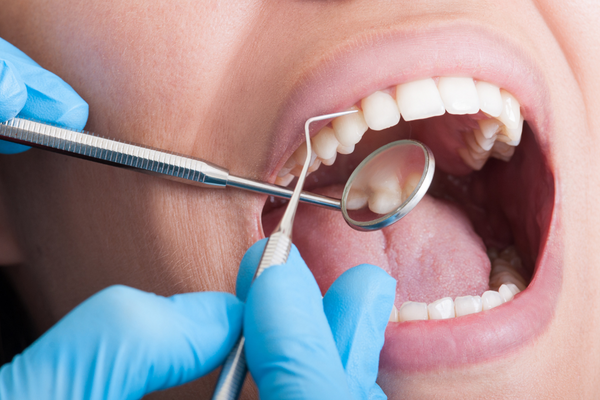
Porcelain Inlays and Onlays
Inlays and Onlays are lesser-known dental restorations. Inlays are an alternative to conventional dental fillings used to fill cavities, whereas Onlays are used to restore the biting surface of excessively worn-out teeth. Both these restorations are custom-fabricated and offer a perfect fit on the teeth.
What Are the Advantages of Choosing Inlays and Onlays?
- Since these restorations are made from dental-grade ceramic, their appearance can be customized to match natural teeth. This helps to keep them under disguise without being too apparent.
- They offer excellent durability, which is similar to that of enamel. This feature allows them to stay as good as new for a long time.
- Inlays help to restore the strength of the teeth that are affected by cavities. This wouldn’t be possible when large cavities are restored using dental fillings as their strength would diminish, and the chances of tooth cracking are high.
- Onlays restore the functionality of the mouth as they enable you to bite and chew food like you always do.
- Inlays offer good sealing properties. They completely fill the cavity and prevent the entry of microbes, thereby preventing reinfection.
How Are Inlays and Onlays Placed?
Ideally, it would take two appointments to place an Inlay or Onlay. During the initial consultation, the dentist will conduct a screening process to understand the severity of the oral condition. We will check for cavities, tartar accumulation, existing restorations, gum disease, etc., before confirming your candidacy for the procedure. Next, we would take oral scans to create a digital impression/mold of the teeth. This will be used as a reference for fabricating dental restorations.
During the next consultation, the teeth will be cleaned and prepared by etching their surface with a suitable etching liquid. The restoration will be placed on the tooth and checked for perfect fit and comfort. Once its contour and structure have been finalized, it will be bonded to the tooth using dental adhesives. They may be polished, and a bite test will be taken to ensure optimum bite.
Dental Cleanings
Removing the microbes in the mouth regularly is crucial in maintaining optimum oral hygiene. Although brushing and
flossing the teeth helps to eliminate a majority of the bacteria from the mouth, the plaque and tartar adhered to the teeth and tooth roots would be hard to get rid of. Hence, you would require regular visits to the dentist’s practice for dental
cleaning sessions.
What Does Dental Cleaning Involve?
Professional oral cleaning involves two distinct procedures, namely scaling and root planing.
Scaling: This procedure involves an ultrasonic scaling appliance. It has a metal tip that vibrates at ultrasonic frequencies, allowing the dentist to dislodge the adhered tartar deposits from the teeth effectively. The removed microbes will be washed away using a jet of water.
Root planing: Patients who suffer from gum diseases would usually have deeper gum pockets. This is a result of the receding gum line, which allows the microbes to get deposited in the gum pockets. Due to this, tartar deposits tend to accumulate on the root surfaces as well. They will be removed by a procedure called root planing. The dentist will insert the scaling tip between the gums and tooth roots, and the tartar will be scraped off. Since the procedure could be painful, we may administer local anesthesia to numb the tissues.
Importance of Routine Dental Cleaning
The microbes get deposited on the teeth and form a transparent layer on them after combining with the saliva. This layer is called plaque. When plaque is allowed to stay on the teeth for a long time, it forms tartar – dark patches on the teeth that are quite difficult to get rid of through brushing and flossing. Tartar is the leading cause of cavities as the toxins released by it erode the enamel and decay the underlying tissues. Also, when tartar forms near the gum line, it could lead to gum diseases, such as gingivitis and periodontitis. Hence, visiting the dentist at least once every six months for oral cleaning is essential as a preventive measure

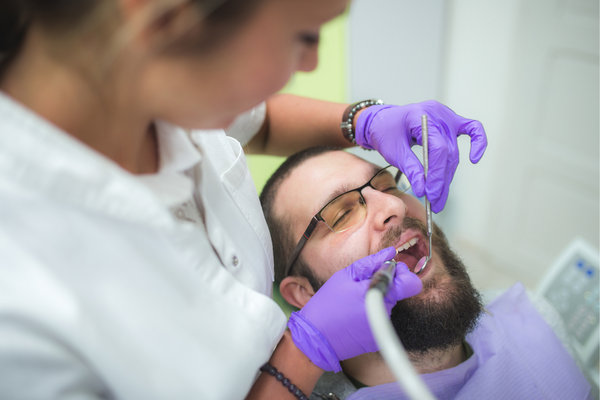
Dental Fillings
Cavities are caused due to microbial action on the teeth and are quite common among individuals of all ages, especially children and teenagers. It is due to the excessive consumption of sugary foods such as chocolate, candies, gummy bears, pastries, etc. This can put one’s entire oral health at risk and also ruin the beauty of the person’s smile.
How Are Cavities Formed?
Eating sugary foods is the driving cause of cavities. But, in reality, the excessive microbial activity in the mouth gives rise to them. The bacteria in the mouth feed on the food debris left after we eat. During this, they release harmful acids that have the potential to erode the enamel. Over time, the microbes enter the deeper layers of the tooth and cause decay.
What Is the Solution?
The best way to restore a cavity-infected tooth is by using dental fillings. They restore both oral functionality and aesthetics, thereby preventing the tooth from being extracted. Also, the procedure to apply fillings is straightforward and requires just one visit to the dentist’s office.
What Are the Advantages of White Fillings?
- White fillings or tooth-colored fillings are made from either ceramic or composite. This feature makes them highly customizable in terms of color, texture, translucency, contour, etc.
- When a dental filling is applied to a cavity, it would be so natural-looking that anyone who looks at your smile wouldn’t be able to distinguish it from the natural tooth structure.
- The sealing properties offered by the filling material are excellent. The microbes in the mouth wouldn’t be able to enter the cavity and cause reinfection.
- The material used for the filling is biocompatible. It would blend in with the tissues of the teeth and wouldn’t cause any infection, as in the case of metal or amalgam fillings. Fillings offer excellent durability. They would stay as good as new for many years, provided you take optimum care of your teeth and maintain good oral habits.
Cosmetic Dentistry
A beautiful smile is known to be one of the main traits of confident individuals. It allows you to talk and interact with others more confidently and comfortably. But, not all of us are lucky enough to have a flawless smile that attracts a lot of compliments. Hence, dentists offer the perfect solution to such issues related to your smile’s aesthetics in the form of cosmetic dentistry.
Common Issues Affecting Oral Aesthetics
- Broken teeth
- Chipped teeth
- Missing teeth
- Naturally misshapen teeth
- Malocclusion
- Gum diseases
- Receded gum line
- Worn out teeth
- Discolored teeth
- Excessive gaps between adjacent teeth
- Cavities
How Can Cosmetic Dentistry Help?
Cosmetic dentistry includes several treatment procedures that are primarily aimed at enhancing the appearance of one’s smile. Some of the procedures also improve the mouth’s functionality by strengthening the teeth and preventing their failure. Here are some of the common cosmetic procedures that you could benefit from.
Dental Implants:
Implants are the best solution to replace missing teeth as they are fixed to the jawbone. They offer an alife-like appearance and amazing strength, making them the go-to solution when patients wish to restore their missing teeth.
Bridges:
Bridges are simple tooth restorations that do not require surgery to be bonded in place of the missing tooth. They look exactly like natural teeth in terms of color, shape, and texture, and also function like natural teeth.
Crowns:
Dental crowns are placed on teeth that are too weak, worn out, cracked, chipped, or broken. This allows the dentist to restore them to their ideal function and aesthetics.
Composite Bonding:
Bonding includes the application of composite resinous material on the surface of teeth to get rid of surface imperfections. Issues such as minor cracks, receding of gums, misshapen teeth, chipped teeth, excess spaces between teeth, etc., can be treated using bonding.
Veneers:
Veneers are extremely thin restorations made from composite resin or dental-grade ceramic. They are bonded to the teeth to eliminate the surface imperfections, such as cracks, chipping, discoloration, excessive wear, large gaps between adjacent teeth, etc.
Teeth Whitening:
The teeth tend to stain due to excessive consumption of colored foods, smoking cigarettes, chewing tobacco, drinking wine and aerated beverages, etc. These stains can be removed to give you a sparkling white smile using teeth-whitening procedures. The most prominent ones are conventional in-offi ce whitening, take-home whitening trays, and laser teeth whitening.
Gum Contouring:
The gums complete the appearance of your smile. But, gum diseases like gingivitis and periodontitis can make your smile appear displeasing, as they have symptoms such as bleeding and discharge of pus, redness, the decay of the tissues, etc. We treat gum disease by removing the decayed tissues with laser therapy, root planing to remove the tartar deposits, and grafting healthy tissues to the receded area. After a healing period of a few weeks, the gums would be back to their ideal condition.
Orthodontics:
Orthodontic treatment aims at correcting the alignment of misaligned teeth. This is done using orthodontic aligners, such as dental braces, retainers, Invisalign, etc. Treating malocclusion not only makes your smile appear better but also allows you to clean your teeth effectively.


Dental Extractions
Extractions are necessary to remove teeth that are damaged beyond any form of restoration. In most cases, we will have to extract teeth with very big cavities, root canal infections, or damage due to external trauma. However, before performing an extraction, we will consider every means of restoring it to its ideal form. But, when all means of restoration fail, the tooth would have to be extracted to prevent it from becoming a severe health condition.
When Would an Extraction Be Necessary?
- Tooth extraction may be necessary in the following cases:
A tooth may have to be extracted when it has been seriously affected by a cavity. In the worst case, we would try to save it using root canal therapy by getting rid of the infected pulp. If the treatment doesn’t prove useful in restoring the tooth, it will have to be extracted. - When a tooth undergoes damage due to external trauma, it may suffer minor cracks, chipping, fracture, or even break off at the gum line. It is best to have it extracted to prevent the tooth from causing a lot of pain and leading to oral infections.
How Is the Extraction Carried out?
When you visit our practice to get a dental extraction, we will start with an initial screening of the oral cavity. The tooth tobe extracted will be cleaned to get rid of microbes and prevent them from entering the site of extraction. Local anesthesia will be administered to numb the soft tissues of the mouth, teeth, and jawbone. This prevents any pain and discomfort during the extraction.
Once the anesthesia takes effect, the tooth will be gripped using forceps and shaken lightly to loosen it from the socket. Next, it will be pulled out of the socket in its entirety in one swift motion. The patient would just feel a slight sensation of pressure and no pain at all. You will be asked to bite into a piece of gauze to control the bleeding and to promote the formation of a clot.
Post-extraction Care
For the next few days after an extraction, avoid consuming foods that are too hot, cold, or spicy. Also, take extra care not to dislodge the clot while brushing your teeth, which otherwise could cause more bleeding. Once the wound heals, we can go ahead with planning the restoration procedure.
Bone Grafting
Missing teeth are a huge letdown. They ruin a person’s natural smile and also pose many oral problems. However, dental implants offer a perfect solution for missing teeth as they are fixed to the jawbone using a metal post. But, a significant concern when it comes to placing dental implants is the inadequacy of jawbone volume.
What Is a Bone Graft?
Bone grafting is a procedure used to heal and promote bone growth in the jaws. It is a highly advanced and effective method, usually performed before dental implantation. Since bone tissues have the ability to regenerate naturally, placing bone grafts strategically on the jawbone would promote its growth, thereby improving its thickness and volume. After the bone graft placement, it would take a few months for the bone to heal.
Why Does the Jawbone Deteriorate?
When a person undergoes dental extraction, the extracted tooth’s socket will naturally be filled with bone tissues within a span of a few months. The walls of the socket should be thick enough for this natural regenerative process to take place. But when the walls of the socket are thin, the natural healing process would be affected. This makes dental implantation difficult as the bone isn’t strong or wide enough to support it. Also, the implant would be unstable and could get displaced due to this. In such cases, a bone graft can be done.
What Material Is Used for Performing a Bone Graft?
The material used for the procedure depends on the individual. The best results are obtained when the patient’s bone is used for performing the graft. The dentist would harvest the bone either from the mouth or any other region of the body, preferably the hip, depending on how much bone is needed. Another option available is to harvest bone tissue from cadavers. Sometimes, synthetic materials are also used.
Procedure
The donor bone will be harvested and rigorously tested to ensure it is free from any possible infections. It will then be sterilized, and all the organic material will be removed from it, leaving behind only the minerals, which would promote bone growth.
The patient will be given local sedatives before the surgery. The extracted bone will carefully be placed where the bone growth is required. A special dissolvable membrane may be placed over the graft to ensure its protection and promote healthy growth. The bone graft would have to mature for a few months for it to promote bone growth, during which it will be monitored with the help of x-rays. Once the graft has fully developed, the implant can be placed.


Same Day Dentures
Dentures are a blessing to patients who have lost more than just a few teeth. When individuals have lost almost all their teeth, it would be challenging and complicated to replace them using dental bridges or implants. Hence, we suggest patients go for dentures, as it is easier to replace them in one go. Moreover, dentures offer several advantages that their alternatives do not.
What Are Dentures?
Dentures are ideally made from a combination of metal, ceramic, and acrylic. Visually, a denture would look perfectly like a set of teeth supported by the gums. Ceramic is used to fabricate the teeth, whereas acrylic is used to fabricate the gums as it provides a natural appearance. Individuals who have lost all or most of their teeth can get them restored using dentures. They would be able to bite and chew food just like they used to before.
Advantages of Choosing Dentures
- The aesthetics of dentures is excellent. Each tooth can be fabricated to perfection and attached to the denture effectively. Even the acrylic used to replicate the gums can be customized to perfection.
- Dentures are removable prosthetics. They can be taken off whenever you have to go to bed or feel you need a break from them.
- The face would look fuller when the patient puts on the denture. In fact, the patient tends to look younger after putting on dentures.
- Dentures offer exceptional durability. With regular use, they hardly wear and would easily last for a good number of years.
- Since they are customized according to the contour of your mouth, they would offer a seamless fit. The chances of the dentures slipping off from the mouth are next to none.
- The mouth’s functionality would be restored to normal with dentures.
Treatment Procedure
When you visit our practice for a consultation, we will screen the mouth to check for factors that could affect the treatment. Some of them are gum health, existing teeth, overall health conditions, size and positioning of the jaw ridges, etc. If you qualify as a candidate for dentures, we will go ahead with the procedure. A highly precise digital impression of the gums and ridges will be taken using CBCT to act as a reference while fabricating the dentures. This data will be used for the fabrication process. At Revive Dental Studio, we provide perfectly fitting and aesthetically pleasing dentures on the same day of your initial consultation, making it highly convenient.
Once the dentures are ready, the dentist will place them in your mouth and check whether they fit perfectly. In case any adjustments need to be made, we will tend to them. The dentures may have to be altered once in a few months if you feel their fi t has changed. Like all dental restorations, dentures have to be handled with care. Biting hard objects or foods, opening bottle caps or plastic bags with their teeth, etc., should be avoided to ensure their long life.
Implant Dentistry
Finding a replacement for an extracted tooth is quite an essential and necessary step patients must take. Failing to get a missing tooth restored can lead to several drawbacks that are both aesthetic and functional. To help you with this, we recommend dental implants – the best tooth restorations that offer unmatchable properties.
What Are Dental Implants?
Dental implants are the strongest and most highly-preferred tooth restorations. They offer an excellent level of stability and strength, owing to the titanium roots that firmly hold them in the jawbone. The visible tooth will be replaced using an aceramic crown attached to the metal implant. Together, they form a stable and strong restoration that would last for several years together.
Advantages of Choosing Dental Implants
- Implants are highly strong and stable restorations.
- They are long-lasting. In many instances, they are down to have lasted for over 15 years without hassle.
- Implants are life-like in both appearance and functionality. They can be customized to look just like a real tooth. Also, the functionalities of a natural tooth, such as biting and chewing, will be restored.
- If you lose a frontal tooth, your phonetics will change. This can be reversed with the help of an implant as it fills in the gap completely.
- The durability of the ceramic crown is excellent. It would hardly wear with regular oral functions such as biting and chewing food.
Implant Placement Procedure
The procedure for placing the implant would usually take place over two different consultations. During the first sitting, the dentist will screen your oral cavity and run a few tests to determine the candidacy for implants. A CBCT scan will be conducted to understand the exact positioning of the teeth and determine the jawbone volume. This ensures the longevity and stability of the implant. Once you qualify, we would go ahead with planning the treatment procedure.
During the implant placement surgery, a titanium stud will be implanted into the jawbone. For this, we will administer local anesthesia to numb the gums, teeth, and jawbone. A small hole will be made in the jawbone, and the implant will be inserted in it with high accuracy. Post this; you will be advised a healing period of a few weeks to allow the bone to fuse with the implant.
During the next surgery, we will carefully place an abutment on the implant. This connecting element helps to hold the crown stable. The crown will be placed on the abutment and bonded firmly using dental adhesives. A bite test is conducted to ensure the crown doesn’t alter your natural bite.
Post Implantation Care
Although the implant offers excellent strength and durability, it is advisable not to bite or chew hard foods. Activities like opening bottle caps or ripping open plastic bags with teeth should be avoided. In addition, it is crucial you maintain optimum oral hygiene by brushing and flossing twice every day to keep the gums free from infections and the teeth from cavities. If you feel the implant has loosened, please visit the dentist immediately to get it treated and restored.
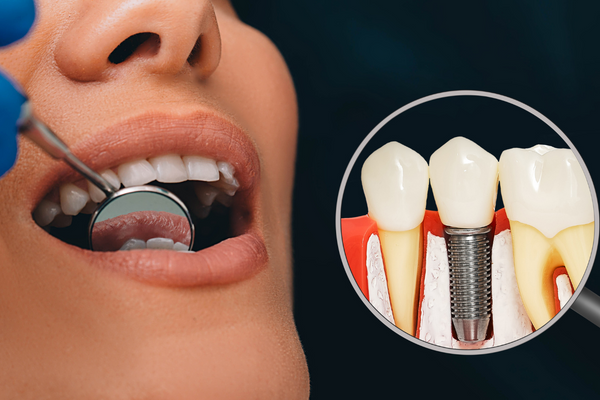
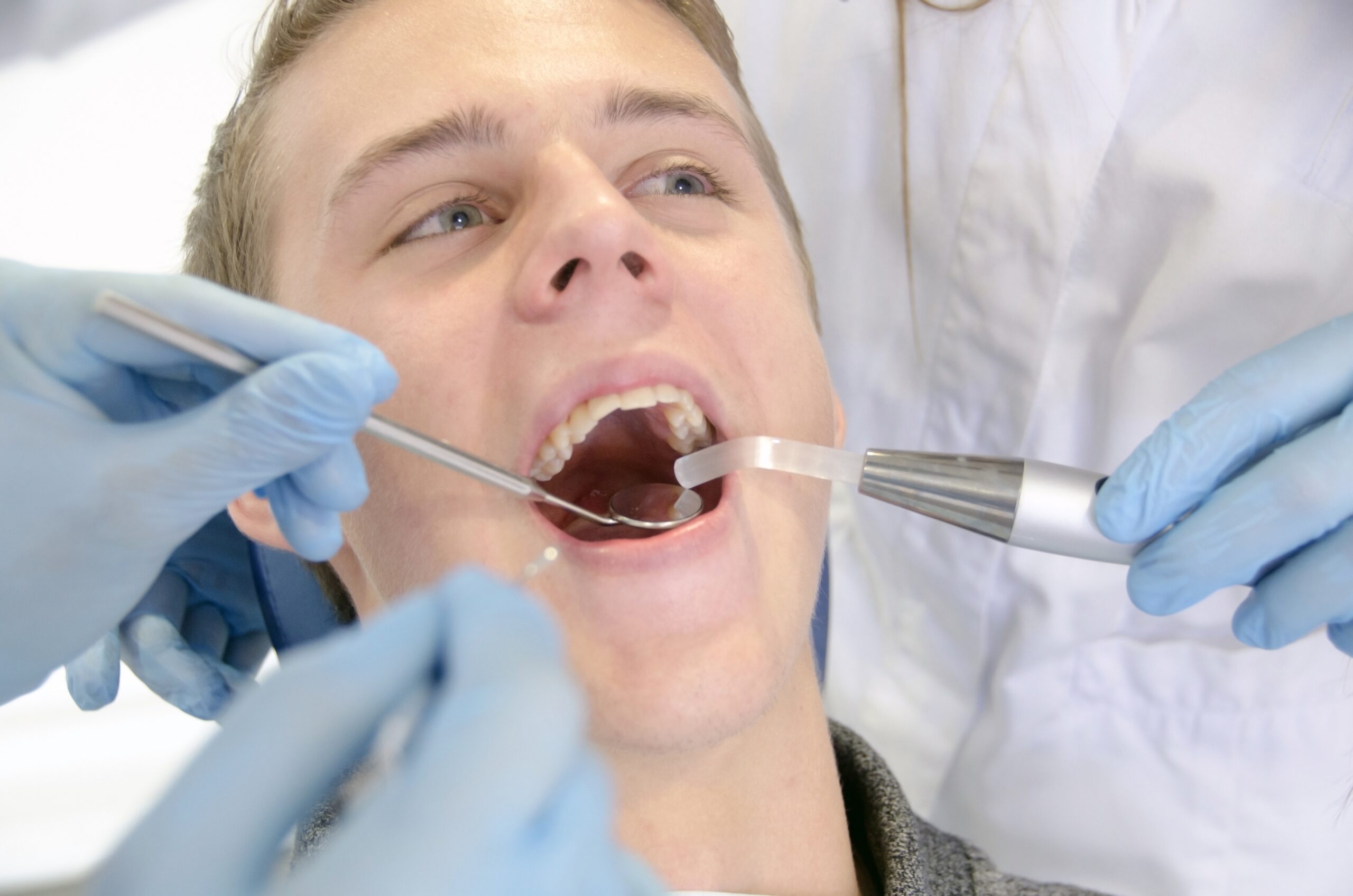
Root Canals
Root canal therapy is the last treatment option to save a severely decayed and root canal-infected tooth. A highly trained endodontist performs root canal procedures with the help of sophisticated equipment to ensure the tooth is restored to its ideal condition. If not for root canal therapy, we would ideally recommend the tooth be extracted to save the adjoining tissues from getting infected as well.
What Leads to a Root Canal Infection?
The most common cause of a root canal infection is a cavity (tooth decay) that has been ignored for a long time. Due to this, the cavity could grow wider and deeper, thereby decaying the underlying dentin. Ultimately, the microbes reach the root canal cavity and infect the dental pulp, which is composed of nerves and blood vessels. In some instances, external trauma to the mouth, which has resulted in broken, cracked, or chipped teeth, severe gum disease like periodontitis, etc., could also lead to a root canal infection.
What are its symptoms?
Patients who suffer from a root canal infection usually face the following symptoms:
- The infected tooth could appear discolored due to the decayed pulp
- Severe pain while brushing the teeth, biting or chewing food, etc.
- Bleeding gums
- Discharge of pus from the gums
- Jawbone deterioration
- Loosening of the tooth from its socket
How Is a Root Canal Infection Treated?
During root canal therapy, the dentist removes the infected pulp from within the root canal cavity. This is either done by making a hole in the tooth and manually extracting the decayed pulp or using a highly intense laser beam to eliminate the bacteria in the pulp and remove it. The dentist will make sure to clean the walls of the cavity as well before placing a small amount of antibiotic medication in it. This helps to prevent reinfection and the growth of microbes in the root canal cavity. The hole will be sealed off with a tooth-colored filling material.
Since the tooth usually tends to weaken after the procedure (due to the removal of nerves and blood vessels), we will restore it using a dental crown. It helps to hold the tooth intact and prevent any damage to it while maintaining pleasing aesthetics.
Invisalign
Clear aligners are a significant advancement in the world of dentistry. They are an alternative to dental braces, which were the only go-to solution to treat a malocclusion. Among the various clear aligners available today, Invisalign is undoubtedly the best alternative for conventional metal braces as it is aesthetically pleasing and functionally superior.
Why Is Treating Malocclusion Important?
- Malocclusion can attract unwanted attention when you smile. People with misaligned teeth tend to face a lot of embarrassment when someone mocks their smile.
- The functionality of the mouth could be negatively affected due to malocclusion. The way the person pronounces words, bites, and chews food may not be as usual due to it.
- The equal distribution of forces on the teeth may be ill-matched due to the misalignment of teeth. It could bring about a change in the shape of the jawbone, leading to bone deterioration, and loosening the teeth from the sockets.
- Optimum oral hygiene, i.e., brushing and flossing the teeth can become increasingly complicated when the teeth aren’t aligned appropriately. It could influence the chances of tooth decay.
Advantages of Choosing Invisalign
Metal braces have been used for many years to treat malocclusion and are quite a popular solution. However, they tend to leave a nasty appearance on your smile during the treatment period. It can lead to embarrassment, making you feel too conscious of your facial appearance when you talk or smile. Invisalign will be the end of such issues and would also bring a few more advantages to the table. Here’s why you should consider it:
- Invisalign is made from transparent plastic with shape memory. The aligners would do a great job of staying under disguise. However, if anyone takes a close look at your smile, it would be visible.
- They are removable aligners. You may take them off whenever you have to brush your teeth, eat food, or drink beverages. Please make sure you don’t leave any food debris or sugary residues on the teeth when you put them back on, as it could apply unwanted pressure on the teeth.
- They are metal-free. It significantly reduces the risk of sustaining oral injuries due to metal brackets or wires, as in the case of braces.
- Though Invisalign is made from plastic, the aligners would be fabricated with such precision that they do not injure the gums or the surrounding soft tissues in the mouth.
- The technology used to make the aligners is highly advanced. It allows us to monitor the movement of the teeth precisely as the treatment progresses.
What’s the Treatment Involved?
The orthodontist will screen your teeth to understand the severity of malocclusion and any other issues affecting the treatment procedure. We will scan the mouth, and the data obtained from them will be used to fabricate the aligners from dental-grade plastic material in a laboratory.
Since you are new to Invisalign, you may feel slightly uncomfortable when you first wear them. However, you would get used to it within a day or two, and your treatment would be going on in disguise. Invisalign has to be on for almost the entire part of day. Except for brushing your teeth and eating food, they will have to be worn for 22 hours each day. You will have to switch to a new set of aligners once every two weeks. The new set of aligners would allow the teeth to move to their ideal positions further. Based on the malocclusion’s severity, it could take between six months to a year to complete the treatment.



